The Book of Distance
Written and created by Randall Okita
2020
| Virtual Reality Experience
VR
English
Selections and Awards
Winner - Best WorkJapan Prize - Digital Media Division (2020)
Winner - Virtual & Remote, Best Narrative Experience The Webby Awards (2021)
Winner - Best Immersive ExperienceCanadian Screen Awards (2021)
Winner - Golden Fireball AwardKaohsiung Film Festival - VR (2020)
Winner - Best Immersive Story Sandbox Immersive Festival (2021)
Winner - VR Story AwardBeyond the Frame Festival (2021)
Winner - Horizon PrizeFestival du nouveau cinéma de Montréal (2020)
Winner - Best in AnimationVancouver International Film Festival - VIFF Immersed (2020)
Winner - Rockie Awards, Interactive: Youth (11-17)Banff World Media Festival (2021)
Winner - FWA of the DayThe FWA Awards (2020)
Winner - Best XP of the yearXR Awards (2020)
Winner - Production Company of the Year - National Film Board of CanadaXR Awards (2020)
Winner - Creator of the Year (Randall Okita)XR Awards (2020)
Winner - Best Cinematography or Visual DesignXR Awards (2020)
Winner - Best StorytellingXR Awards (2020)
Official SelectionSundance Film Festival - New Frontier, Park City, Utah, USA (2020)
Official Selection Tribeca Film Festival - Tribeca Immersive (2020)
Official Selection Hot Docs Canadian International Documentary Festival - DocX (2020)
Official Selection Tribeca Virtual Arcade @ Cannes XR (2020)
Official Selection Bucheon International Fantastic Film Festival (BIFAN) - Beyond Reality 2020 edition
Official SelectionVenice International Film Festival - Venice VR Expanded (2020)
Official Selection New Images Festival - XR Competition (2020)
Official SelectionOttawa International Animation Festival - VR Competition (2020)
Official Selection IDFA Doc Lab - Spotlight (2020)
Official Selection London Film Week - VR Showcase (2020)
Official SelectionFipadoc - Smart (2020)
Official Selection Games for Change Festival - Immersive Arcade (2021)
Official SelectionPowell Street Festival (2021)
Finalist - VR Experience of the YearVR Awards (2021)
Official SelectionJi.hlava International Documentary Film Festival (2021)
In 1935, Yonezo Okita left his home in Hiroshima, Japan, and began a new life in Canada. Then war and state-sanctioned racism changed everything—he became the enemy. Three generations later, his grandson, artist Randall Okita, leads us on an interactive virtual pilgrimage through an emotional geography of immigration and family to recover what was lost.
In 1935, Yonezo Okita left his home in Hiroshima, Japan, and began a new life in Canada. Then war and state-sanctioned racism changed everything—he became the enemy. Three generations later, his grandson, artist Randall Okita, leads us on an interactive virtual pilgrimage through an emotional geography of immigration and family to recover what was lost.
The Book of Distance blends techniques from mechanical sculpture, film, and stage to redefine personal storytelling in virtual reality. Family archives add a haunting layer of realism. 2D and 3D hand-crafted sets reminiscent of Japanese woodblock prints, evocative character design, and seamless choreography combine with surprising moments of interaction to gently whisk us across the ocean and through the years.
Okita invites us to participate in this generous act of imagination: a space of magical theatre and generational echoes. He never strays too far from our side as we move through the story’s darker moments. His need to reclaim his grandfather’s lost moments becomes our own. Together we reimagine a significant moment in history and take part in a very personal journey of loss and recovery.
About the user experience
The Book of Distance is a room-scale interactive virtual reality experience that imagines new possibilities for personal storytelling.
The experience opens with an old-fashioned black paper photo album—the kind our grandparents used to have. We turn the page to suddenly find ourselves inside a landscape of lost memories, teeming with lives lived as imagined by writer and creator Randall Okita. As we journey across countries and generations, Okita acts as our guide, at times physically constructing each new scene as if directing on set for an audience of one.
A powerful linear narrative is balanced with moments of interaction that deepen our understanding of the story. Seamless choreography moves us around the space, engaging our emotions through physical action. We reveal archival family photos and documents that remind us that this journey is the real-life story of Randall’s grandfather, an immigrant to Canada in the 1930s, imprisoned soon after by his government because he was Japanese.
The story unfolds from that moment—a moment that Okita has enacted for himself as an attempt to make sense of his grandfather’s journey. Using the medium of virtual reality, the artist invites us to participate in his act of imagination. The short-form piece lasts only 25 minutes, but by the end we feel as if we have been transported somewhere else.
The Book of Distance will be available on Steam, Viveport and the Oculus Store in 2020, in English, French and Japanese.
Interview with Creator Randall Okita
Why did you decide to share your grandfather’s story?
What we know about our grandparents and family history often comes in bits and pieces. The Book of Distance is my attempt to recover all those things my grandfather didn’t say—including certain moments that may have been too painful for him to remember. I wanted to reimagine what he lived through, to recreate an experience that allows others to participate and to bear witness.
Why did you decide on virtual reality as a storytelling platform?
Virtual reality offers new possibilities for looking at and engaging with snippets of historical moments. When I started experimenting with VR, it became apparent that I could reimagine moments that I’ve thought about so many times in a completely different way. I could be present and participate in them. I was captivated by these possibilities, and the project evolved from there.
I also wanted to tackle one of the shortcomings of many VR experiences with a strong storytelling component: the fear that you’re somehow missing key parts of the story, either because you’re looking the wrong way or not paying enough attention to the right things.
My goal was to create an interactive space that felt both constructed and fictional, but with layers of realism—all while letting viewers know where they’re supposed to be. That way they can relax and enjoy the immersive environment as they participate in the story unfolding around them.
Aesthetics and mood are always a big part of VR experiences. Tell me about your stylistic choices.
I would describe it as minimalist magical theatre. I intentionally created the sets in the spirit of theatre and Japanese woodblock prints. This can be seen in just about everything—the lighting, the music, the transitions, and so on. There’s a lot of flat sets with things like 2D moving waves and clouds. These are all models that were hand-crafted by artists and then animated.
Unlike the highly rendered environments of most VR experiences, I wanted viewers to realize that we were hand-building a physical space built on active imagination.
The characters in the experience lack facial features and do not speak, yet they speak volumes. How did you achieve this?
This idea of magical theatre allowed us to limit details to the areas I felt were important for telling the story and for evoking the emotion of the journey. I wanted viewers to focus on the presence of the characters in that particular situation and moment in time rather than rely on their facial expressions or words for emotional clues. This approach allows the audience to connect with the characters in a different way.
I really like the idea of saying “this is a story that we’re telling you”—one that’s built on my own imperfect knowledge of my grandfather’s past and then filled in with best guesses. If you can do that and still have viewers engage with the story and characters on an emotional level, then that’s where the real magic happens.
You performed the motion capture for some of the characters in the experience. What was it like embodying your grandfather as a young man?
It was pretty mind-blowing. I know his gait, his walk, the injuries that he got on the farm and how they manifested when he got older. Being able to physically embody him was a beautiful, performative, connected experience.
Why did you decide to include your present-time self in the experience?
I think it’s important to show that I am participating in the construction of these ideas and imagining these memories of my grandfather’s story. But it’s also about the act of me trying to connect with this history and what happened—of trying to make sense of what my grandfather went through. Even the inaccuracy of my imagination and the artifice of what I’m putting the viewer through is important. These intersecting relationships are what make the experience so interesting.
If your grandfather were still alive today, how do you think he would react to this project?
I think he would just chuckle and not say anything. I think he would feel like he was getting too much attention. He’d probably just want to get out of the limelight and go do some gardening. But I think he’d also be pretty happy that we would be able to share it.
Your grandfather came to Canada filled with the promise of a better life. Do you think he regained any of this hope after being interned?
I think he did. He was somehow able to continue on. I never knew him to be angry. He was incredibly quiet but also incredibly sweet. I think he was very proud of what he was able to accomplish. I’d like to think that he saw things going in the right direction.
Any nice surprises come out of this project?
One of my favourite things to hear from people who have experienced The Book of Distance is the connections these memories bring up. I’m very proud of the piece and of being able to share it on behalf of my family, but I also love those kinds of echoes from people—when they talk about the old shoeboxes and albums they have. To me, that’s really what it’s about. This is one of many stories and if people can carry that afterwards, I think that’s pretty wonderful.
Interview with Producer David Oppenheim
How did the NFB come to collaborate with Randall Okita on The Book of Distance?
In the summer of 2016, our NFB studio in Toronto invited a handful of artists to come in and experiment with some emerging VR tools. The NFB already knew Randall from his previous animated short film, The Weatherman and the Shadowboxer, as well as his other work in sculpture and installation. We thought it would be interesting for him to really interrogate VR as an artistic medium.
What was the genesis of the project?
The basic concept for The Book of Distance really came alive when Randall started going down the path of exploring his grandfather’s journey.
We set out to tell a story that we felt could add to the conversation around this dark period in Canadian history and the world we live in now. With Randall’s artistic background in film, sculpture, and performance, we felt he could look at VR as a mode of storytelling in an interesting way—particularly in terms of how the story could be experienced in a medium that privileges physicality and space. We knew he could bring this experience to life by borrowing from the other art forms he had worked with in the past.
What does the project bring to the virtual space?
Telling a good story in an interactive medium may sound simple—give the audience some choices—but it’s really difficult to balance the power of linear storytelling by an authorial voice and the power of giving the audience some agency in that telling.
Working with Randall was a great opportunity to try and hone the natural affordances and possibilities of telling stories in VR. The Book of Distance tells a strong linear story from the point of view of the director, but it does so in a way that also allows the audience to move through landscapes and physically engage with the story.
Randall managed to strike that balance remarkably well. Everything in the experience comes together in a very comfortable and enjoyable way—like it’s the most natural thing in the world to be seeing and interacting with these dramatic moments in the virtual space. Like any powerful work of art, we are given the space to project onto it. Randall asks us what it might be like if we could close the distance between our memories, and ultimately, what would it feel like if we didn’t have to live in this space in-between? That’s a really enticing proposition. Even though the story is about Randall’s own family past, we end up wondering about our own.
What does this project bring to the collective space?
There is a great loss in the silencing of a community and these reverberations have played out across generations. Giving Randall a platform to tell his story is an attempt to reclaim these lost stories and, hopefully, create more space for the right conversations to occur.
Trailer
30 Sec. Promo Teaser
Walkthrough with Artist Commentary
Randall Okita and David Oppenheim on the Voices of VR podcast
Team
Randall Okita
Writer and Creator
Photo
David Oppenheim
Producer
Photo
Anita Lee
Executive Producer
Photo
Images
Loading...
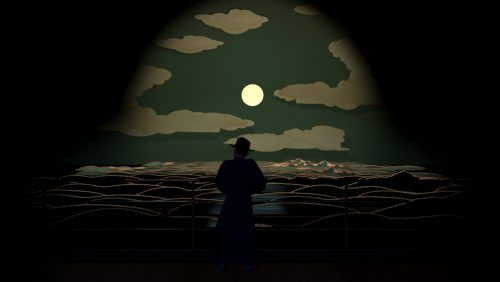
Download
Loading...
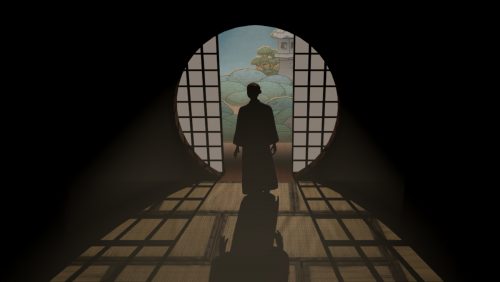
Download
Loading...

Download
Loading...
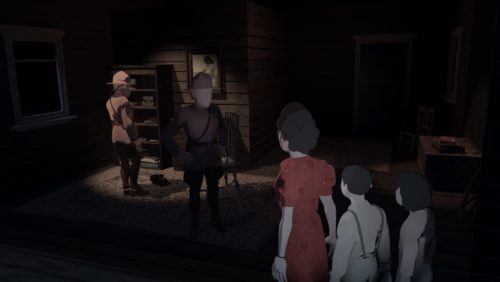
Download
Loading...
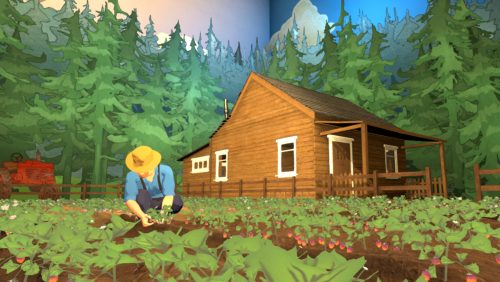
Download
Loading...
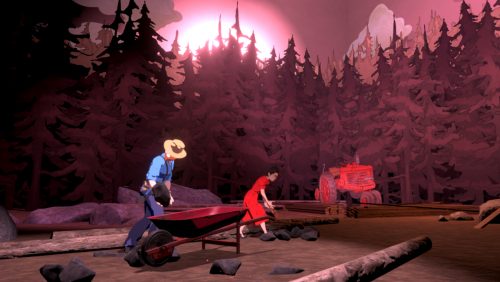
Download
Loading...
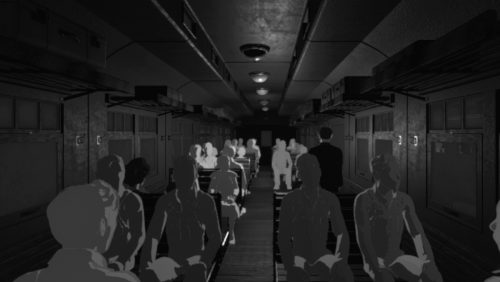
Download
Loading...

Download
Loading...
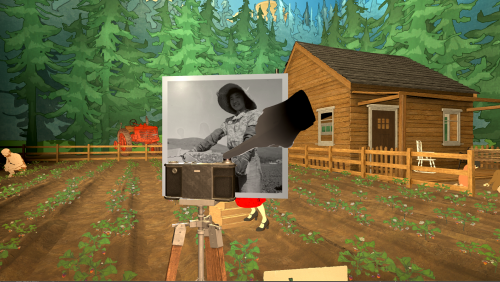
Download
Loading...
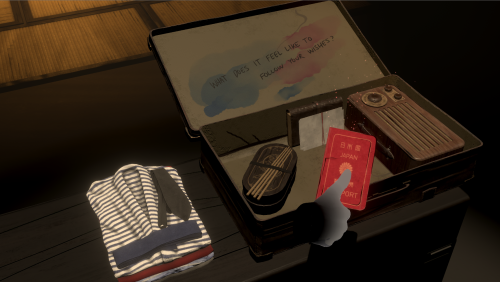
Download
Credits
Written and created by
Randall Okita
Produced by
David Oppenheim
Executive Producer
Anita Lee
Associate Producer
Kate Vollum
Project Managers
Oliva Amu
Jessica Parsons
Art Director
Sam Javanrouh
Lead Artist
Emma Burkeitt
Lead Programmer
Luke Ruminski
3D Artists
Jeremy Canton
Paul Constance
Concept Artist
Mohammed Karam
Programmers
Michael Sebele
Jord Farrell
Music & Sound Design
Menalon
Rigger
Twisted Mountain Animation
MoCap Technician
Aylwin Lo
Featuring
Lloyd Okita
Story Consultants
David Bezmozgis
Kerri Sakamoto
UX Consultant
Stefan Grambart
Animation Consultant
Aleks Berland
Animators
Moysis Antoniou
Prashanth Bhogaraju
Kerie Green
Liam McLaughlin
Graphic Design
Geoff Watson
Production Coordinators
Jennifer Bertling
Andrew Martin-Smith
Frances Nyarko-Mensah
Manager, Studio Operations
Mark Wilson
Production Supervisor
Marcus Matyas
Technical Coordinator
Kevin Riley
Studio Administrator
Patricia Bourgeois
Stefanie Brantner
Leslie Anne Poyntz
Unit Production Manager, Japan Shoot
Jennifer Bertling
Interpreters
Tomomi Kataoka
Catherine Sachi Kikuchi
Archival Researcher
Pamela Grimaud
Legal Counsel
Peter Kallianiotis
Publicist
Jennifer Mair
Marketing Managers
Gabrielle Harvey
Tammy Peddle
Laurianne Désormiers
Marketing Coordinators
Sophie Thouin
Stéphanie Quevillon
Eric Bondo
Social Media Strategists
Emilie Nguyen Ngoc
Hannah Martin
Community Managers
Alyssia Duval-Nguon
Melissa Sauvé
INFORMATION SYSTEMS & TECHNOLOGY
Sr DevOps & Infrastructure Specialist
Sergiu Raul Suciu
Head, Systems Infrastructure
Bruno Gervasi
R&D
Engineer, Development & Media
Frank Nadeau
TECHNICAL SERVICES
Technical Coordinator, Projects
Mira Mailhot
DIGITAL PLATFORMS
Director, R&D and Digital Platforms
Jimmy Fournier
Project Manager, Digital Products
Catherine Perreault
Technical Coordinator, Digital Products
Ana Appleyard
DEVELOPMENT PHASE
Project Manager, Development
Robert Sandberg
Art Lead, Development
Sam Javanrouh
3D Artists
Omran Faour
Jenny Bermas
Concept Artist, Development
Rupinder Bhogal
Graphic Artist, Development
Alexander Perkins
Storyboard Artist, Development
Pavel Loudine
Production Designer
Matthew Morgan
Lead Programmer, Development
Stephan Tanguay
Programmers, Development
Nicholas Fox Gieg
Matthew Fabb
Junior Programmers, Development
Marishka Kalathil Zachariah
Jord Farrell
Technical R&D
Jonathon Corbier
Tyler Sammy
Unity Developer, Development
Aylwin Lo
UX Consultant, Development
Pietro Gagliano
Demo Editor, Development
Mike Reisacher
Microsite Design, Development
Trevor Kerr
Production Coordinator, Development
Carly Kastner
Production Assistant, Development
Max Wolfond
Additional Music
“Sendo Kawaiya”
Performed by Otomaru
Written by Kikutaro Takahashi, Yuji Koseki
Published by Zen-on Music Company Limited
Courtesy of Nippon Columbia Co., LTD./NIPPONOPHONE
“Take It Easy”
Composed & produced by Giorgio Di Campo,
Licensed from FreeSound Music
Archival Footage Courtesy of
The Okita Family
Nikkei National Museum & Cultural Centre
National Archives Catalogue at College Park (USA)
Newspapers.com
Library and Archives Canada / C-057249
City of Vancouver Archives
Rare Books & Special Collections, University of British Columbia Library or University Archives
Producers Would Like to Thank
Christina Lee Storm
Content Strategy
Jubin Dave
Animation Workflow Strategist
Demian Gordon
Motion Capture Society
Special Thanks
Yonezo Okita
Yeiko Okita
Lloyd Okita
Yvonne Yates
Grace An
Eloi Champagne
Dane Clark
Michael Fukushima
Trevor Kerr
Kimberly Anne Laferrière
Joanne Lam
Lea Marin
Spencer Maybee
Kiara Mikita
Maral Mohammadian
Kerry Okita
Pat O’Toole
Pauline Rosenbaum
Tania Thompson
Michelle Van Beusekom
Mark Van de Ven
Media Relations
-
About the NFB
The National Film Board of Canada (NFB) is one of the world’s leading digital content hubs, creating groundbreaking interactive documentaries and animation, mobile content, installations and participatory experiences. NFB interactive productions and digital platforms have won over 100 awards, including 21 Webbys. To access this unique content, visit NFB.ca.